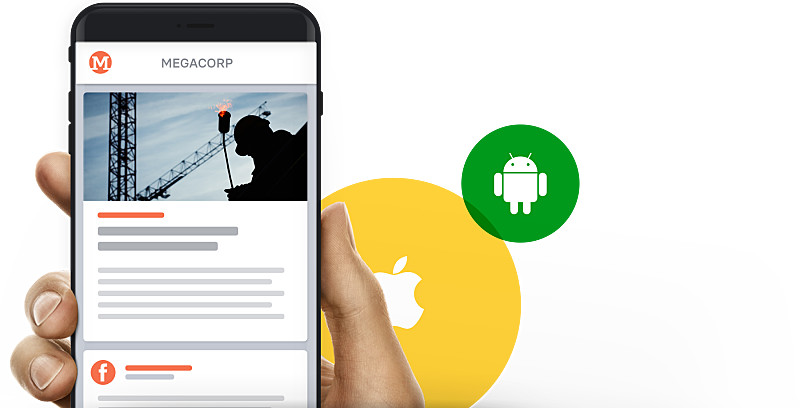
The sustainable activation of the user in the own app is one of the most important goals. Mobile apps offer a rare opportunity to interact with your target group on a personal level. After all, there is no more personal device than the smartphone.
So-called in-app messages help to pick up the own users directly after the download and to optimize the user experience permanently. They offer exciting opportunities to keep everyone up to date and to show how the content and functionality of your app is developing. In-app messages are a flexible tool that combines information and entertainment.
We have written down below what messages in the app are useful for.
1. Welcome messages
Successful user onboarding is incredibly important. A nice welcome message can make a big difference. You increase the likelihood that your app will last the first 72 hours, not be deleted, but used again and again.
The welcome message can be linked to a link, an image or a video, giving the user deeper insights into the app’s functionality. Or you can simply thank the user for downloading or, even better, registering with a short message after logging in. Ultimately, the goal is always to reinforce and clarify the motivation and reasons why the user downloaded the app. What awaits the user in the app? What can he do with it? And why should he use the app again after the first installation?
Only those who value their users can establish a lasting connection that goes beyond the initial download. Every app has one goal: to retain the user permanently!
Studies show: Welcome messages can reduce app uninstalls by up to 25 percent in the first 30 days! So it makes perfect sense to think about this separately.
2. Announce and explain new features
Whether the user is new or not, the right use and the best possible application of the app is critical to success if the offer is to provide added value for him or her. Besides, everyone knows the logic: if you have the feeling that an app is constantly improving and always offers new features, you definitely have one more reason to keep checking it out. Apps that hardly develop further, on the other hand, rarely make you permanently curious.
Therefore, users should be continuously made aware of new features and updates. The message: we invest in a good user experience and keep you up to date.
To do this, you can lead users to new tools with a short call-to-action or explain the details with a short article or video. You can also draw users’ attention to important measures, events or seasonal promotions.
In-app messaging thus not only improves the user experience, but can also be used to get users to agree to updated terms and conditions. Finally, it may happen that new features are accompanied by an extension of the terms and conditions. In-app messaging makes it quick and easy to ask for consent.
3. User surveys and feedback
Whether it’s qualitative feedback on a hot topic or feedback on the app itself, familiar online survey tools make it easy to gather feedback from users.
Conducting surveys can help to measure and better understand the attitudes and perceptions of your own users and to query the success of specific measures up to their individual satisfaction with the product. tchop makes the integration of any online tool very easy. Within a very short time you are ready to go without any technical effort or you can integrate your already used surveys into the app (at this point we refer to the corresponding blog post here).
In-app messages are the perfect tool to quickly deliver surveys of any kind to the user. Garnished with a short message, you can open the survey directly, participate and continue to use the app after completion. Convenient, easy and mobile everywhere possible. This not only increases the acceptance of the survey itself, but also demonstrably the quality of the feedback.
4. Prompt for app rating
Asking loyal users to give their feedback on the app in the App Store to generate more app downloads is another way that in-app messages can help. Positive App Store reviews influence ranking and visibility within the App Store.
It makes sense to take advantage of positive moments in the customer journey. For example, by asking users for their opinion after the first chat or the first shared content. A positive experience increases the likelihood that you will give positive feedback yourself.
Summary
Unlike push messages, in-app messages cannot actively activate the smartphone, but are only active in the respective app itself. Only when she or he opens the app in question is the message displayed. Nevertheless, in the right context, with the right timing and linked to the right content, in-app messages can offer many exciting opportunities to activate and sustainably retain users.
Do you have questions about using in-app messages in your own app?! Contact us at any time!









